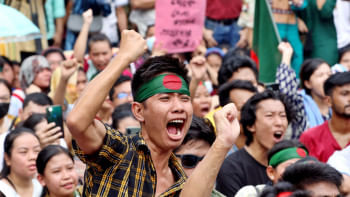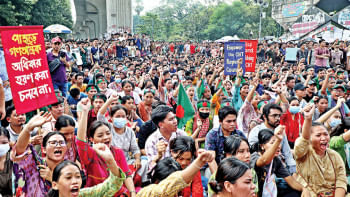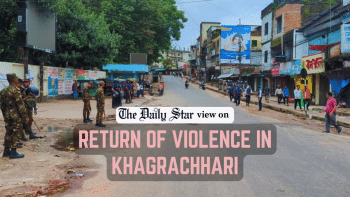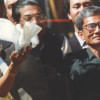CHT unrest: Communal violence and the politics of misrepresentation

The Chittagong Hill Tracts (CHT) in south-eastern Bangladesh has once again been the site of communal violence, with reports of attacks in Rangamati and Dighinala, Khagrachhari. As Bangladeshi academics based in Australia, we reflect on these developments with concern for both the Bangalee and Indigenous communities. Our enduring ties to the country deepen our unease over escalating tensions and misinformation, which distort the realities of the violence and its underlying causes.
The political instability in Bangladesh, driven by a decade of repression, has spurred nationwide unrest. Social media, long controlled by the previous regime, became a crucial tool for public mobilisation, leading to Hasina government's downfall. However, this digital space has since devolved into a platform rife with factionalism, prejudice, and misinformation. This shift has affected the dormant narrative around the CHT violence, where social media has distorted the nature and causes of the unrest, portraying Indigenous people as aggressors instead of victims of long-standing systemic oppression.
Two widespread spates of communal violence rocked the CHT recently. According to media reports, many Indigenous homes and businesses were burned and looted, many Indigenous families were forced to leave their homes fearing attack and at least four Indigenous individuals were killed with several injured in clashes between Bangalee and Indigenous communities. Though major news outlets have documented these incidents, conflicting narratives on social media often depicted the Indigenous peoples as separatists, exacerbating tensions and promoting misinformation.
The CHT certainly has a complex history of Indigenous struggles for autonomy and recognition. Since the 1970s, Indigenous communities have sought justice for land rights and self-governance, but partly due to a conspicuous vacuum on this issue in the school curriculum, the Bangalee population often overlooks this history. The CHT Peace Accord, signed in 1997, was intended to resolve decades of insurgency and land disputes. Yet, over 25 years later, it remains largely unimplemented. Systemic and widespread land grabbing by some Bangalees, often supported by the state, continue to marginalise Indigenous communities. Personal reflections from one of the authors, an Indigenous Chakma from Khagrachhari, attest to the lived experiences of such oppression.
The rate of Indigenous communities' land dispossession in the CHT, due to past government policies and alleged intimidation by some settlers with support from local administration, symbolises the erosion of Indigenous identity and livelihood—narratives that are frequently ignored in Bangladesh's mainstream discourse. Many Bangalees remain unaware of the term "settlers" as it applies to those living in the CHT ,revealing a broader lack of understanding about the region's history.
Moreover, the problematic terminology used to describe Indigenous communities in Bangladesh further compounds this ignorance. Terms such as "Adivasi" (original inhabitants), "Upajati" (sub-tribe), and "Khhudro Nrigosthi" (small ethnic groups) are often employed without consideration of the unique histories and struggles of groups like the Chakma. These terms are reductive and paternalistic, undermining the political legitimacy of Indigenous people's claims to land and cultural recognition.
In contrast, Australia has developed more inclusive and respectful language when referring to its Indigenous populations; "First Nations" or "Indigenous Australians" are used to acknowledge their historical and sovereign rights. While far from perfect, Australia's evolving language around Indigenous issues reflects an important recognition of their place in the nation's history. Bangladesh, however, has yet to adopt such an inclusive lexicon, which continues to marginalise its Indigenous communities.
The role of social media in perpetuating misinformation about the CHT unrest has been particularly damaging. Platforms like Facebook, once instrumental in opposing authoritarianism in Bangladesh, are now used to spread disinformation about the conflict. Posts from some nationalist groups frame Indigenous communities as "anti-state" or "separatist," reinforcing long-standing stereotypes that cast them as enemies of the nation. These characterisations are misleading and dangerous, further inflaming ethnic tensions.
A troubling trend has emerged on social media, where some users engage in debates about who the "true" Indigenous people of the CHT are, based on arrival timelines. This reductive argument oversimplifies the region's complex history and ignores broader ethnic and political struggles. In contrast, countries like Nepal and India have recognised their Indigenous populations through constitutional protections. Bangladesh must similarly acknowledge its Indigenous communities and move beyond simplistic narratives about ethnic identity.
As educators, we believe the misinformation and bias surrounding the CHT conflict are partly the result of a long-standing gap in the national curriculum. The chronology of Bangalee settlement in the CHT, which intensified following the construction of the Kaptai Dam in the 1960s and escalated during the military regime of the 1980s, is seldom discussed. Consequently, many Bangalees view the Indigenous struggle for land and rights as a threat to national unity, rather than a legitimate pursuit of rights and justice.
For the diaspora, the distance from our homeland intensifies our helplessness during any conflict. Social media, which could serve as a bridge between the diaspora and Bangladesh, instead amplifies the dominant divisive narrative, often drowning out the voices of Indigenous people. Often social media posts about conflicts in the CHT contain false or misleading information. These posts, which include doctored images and inflammatory rhetoric, exacerbate tensions and incite hatred.
Addressing the crisis in the CHT requires more than just an end to violence—it demands a shift in how the conflict is understood and discussed. Education is crucial. The history and struggles of CHT's Indigenous peoples must be integrated into the national curriculum. Until people are educated about the colonial legacy and state-sanctioned land grabs that have shaped the current crisis, many will continue to misinterpret the Indigenous struggle as illegitimate.
Moreover, social media platforms must be held accountable for the disinformation they propagate. Algorithms that prioritise sensationalism over truth need recalibration, and fact-checking mechanisms must be strengthened to prevent the spread of false narratives that incite violence.
The unrest in the CHT reflects broader societal failures to address the rights of minority communities, including religious minorities. As members of the Bangladeshi diaspora, we urge our fellow citizens to critically engage with the narratives they encounter and work towards a future where all communities—Bangalee and Indigenous—can coexist with respect and dignity.
Urmee Chakma works at La Trobe University in Australia.
Raqib Chowdhury works at Monash University in Australia.
Arif Kabir works at Deakin University in Australia.
Views expressed in this article are the authors' own.
Follow The Daily Star Opinion on Facebook for the latest opinions, commentaries and analyses by experts and professionals. To contribute your article or letter to The Daily Star Opinion, see our guidelines for submission.



 For all latest news, follow The Daily Star's Google News channel.
For all latest news, follow The Daily Star's Google News channel. 









Comments